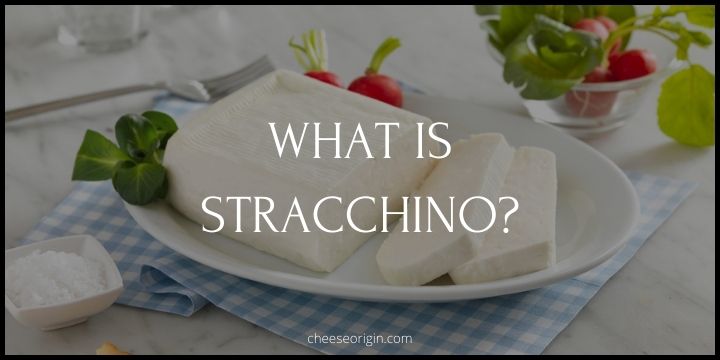What is Baby Swiss? The Milder Legend from Wisconsin

Baby Swiss, the milder legend from Wisconsin, is an American take on the traditional Swiss cheese. Originating in the 1940s when Swiss immigrants Alfred and Margaret Guggisberg sought new opportunities in Ohio, Baby Swiss quickly gained popularity for its delightful mildness and creamy texture.
This cheese has a pale yellow color and a nutty flavor, but what sets it apart from its Swiss counterpart is its shorter aging time – just about a month. With its small ‘eyes’ or holes and a taste that is gentler and sweeter than regular Swiss cheese, Baby Swiss is a true American classic, loved by many for its versatility and pleasing taste.
Quick Facts About Baby Swiss
| Quick Facts | Details |
|---|---|
| Origin | United States, specifically in the Midwest and particularly in Ohio and Wisconsin |
| Type | Semi-soft cheese |
| Made from | Cow’s milk |
| Pasteurized | Yes |
| Texture | Creamy and smooth with small, well-distributed eyes (holes) |
| Flavor | Mild, sweet, and nutty with a touch of butteriness |
| Aging time | Shorter than traditional Swiss cheese, typically about 3 to 4 months |
| Appearance | Pale yellow with small holes |
| Melting properties | Excellent, making it great for cooking |
| Nutrition | High in protein and calcium, but also high in fat and cholesterol |
| Shelf life | Can be stored in the refrigerator for several weeks if properly wrapped |
| Pairings | Pairs well with fruits, nuts, light beers, and white wines |
| Best uses | Sandwiches, fondues, quiches, or eaten on its own as a snack |
What is Baby Swiss?

Baby Swiss is a delightful variant of the popular Swiss cheese, known for its distinct, mild flavor and creamy texture. Unlike traditional Swiss cheese, Baby Swiss originates from the United States, specifically the Midwest, and offers a unique twist on the classic Swiss flavor profile. Its creation is attributed to the innovative cheese makers of Ohio and Wisconsin who sought to craft a lighter, more palatable cheese that would appeal to a broader range of taste buds.
One notable characteristic of Baby Swiss is its smaller “eyes” or holes, a feature that differentiates it from its larger-holed Swiss counterpart. These tiny eyes are a result of a shorter aging process, typically around three to four months. The shorter maturation period also gives Baby Swiss its signature mild, buttery flavor, making it a hit among cheese enthusiasts who prefer a less sharp taste.
But there’s more to Baby Swiss than just its delightful taste and appealing aesthetics. It’s a versatile cheese that melts beautifully, making it an excellent choice for a range of dishes including sandwiches, fondues, and quiches. Moreover, it pairs wonderfully with a variety of foods and beverages, including fruits, nuts, light beers, and white wines, allowing for a multitude of gastronomic combinations.
Nutritionally, Baby Swiss packs a punch. It’s high in protein and calcium, offering significant health benefits. However, like most cheeses, it’s also high in fat and cholesterol, so it’s best enjoyed in moderation. All in all, Baby Swiss is a testament to the creativity and ingenuity of American cheese makers. It’s a cheese that seamlessly blends tradition with innovation, providing a unique and enjoyable culinary experience.
What Does Baby Swiss Taste Like?
Baby Swiss is known for its mild, nutty, and slightly sweet flavor. Unlike traditional Swiss cheese, which has a more assertive and sharp taste, Baby Swiss is softer on the palate, making it an excellent choice for those who prefer a less robust flavor in their cheese. The sweetness of Baby Swiss is subtle, providing a pleasant counterpoint to its nuttiness.
Its texture also contributes to its taste – it’s creamy and smooth, with small, well-distributed holes or “eyes”. This creamy consistency allows it to melt beautifully, enhancing its mild, buttery flavor. When melted, Baby Swiss becomes even creamier, adding a rich, velvety quality to dishes. Whether enjoyed on its own, paired with fruits and nuts, or used in cooking, Baby Swiss provides a delightfully mild, sweet, and creamy taste experience.
Baby Swiss Tasting Notes
- Flavor Profile: Baby Swiss has a mild, nutty, and slightly sweet flavor. It’s less sharp than traditional Swiss cheese, making it more palatable to those who prefer a milder cheese.
- Texture: The texture of Baby Swiss is creamy and smooth, with small, well-distributed “eyes” or holes.
- Mouthfeel: Baby Swiss offers a pleasant mouthfeel, melting easily and spreading its delicate flavors evenly across the palate.
- Aftertaste: The aftertaste of Baby Swiss is subtly sweet and lingers just long enough to entice the next bite.
- Pairings: This cheese pairs well with fruits, nuts, light beers, and white wines, providing a nice contrast to its mild sweetness.
- Melting Properties: Baby Swiss melts beautifully, enhancing its mild, buttery flavor and adding a rich, velvety quality to dishes.
- Aroma: Baby Swiss has a light, fresh aroma that complements its mild flavor profile.
10 Best Baby Swiss Substitutes
| Substitute | Description | Best Used In |
|---|---|---|
| Monterey Jack | This cheese has a mild, buttery flavor similar to Baby Swiss. It also melts well, making it a good substitute in dishes where melting is required. | Melty dishes like fondue, sandwiches, and casseroles. |
| Gouda | Gouda’s sweet and nutty flavor profile aligns with that of Baby Swiss. Young Gouda in particular can mimic the mildness of Baby Swiss. | Cheese platters, sandwiches, and salads. |
| Mozzarella | Mozzarella is mild in flavor and melts beautifully, much like Baby Swiss. However, it lacks the slight sweetness and nuttiness of Baby Swiss. | Pizza, lasagna, and other Italian dishes. |
| Fontina | A creamy cheese with a slightly nutty flavor, Fontina can mimic the texture and taste of Baby Swiss. It’s especially good when melted. | Grilled cheese sandwiches, quiches, and fondues. |
| Colby | Colby is a semi-hard cow’s milk cheese with a flavor that’s mild but somewhat similar to Baby Swiss. | Cheeseburgers, sandwiches, and macaroni and cheese. |
| Mild Cheddar | While Cheddar is typically sharper than Baby Swiss, a mild Cheddar can replicate the softness of Baby Swiss’s flavor. | Cheese platters, sandwiches, and baked dishes. |
What Pairs Well With Baby Swiss?

| Category | Pairs Well With Baby Swiss |
|---|---|
| Fruits | Apples, pears, grapes, and dried fruits like figs and apricots. The sweetness of these fruits complements the mild, nutty flavor of Baby Swiss. |
| Nuts | Almonds, walnuts, and pecans. The crunchiness and earthy flavors of these nuts provide a nice contrast to the creamy texture and mild flavor of Baby Swiss. |
| Breads/Crackers | Whole grain bread, baguettes, and water crackers. These neutral carriers allow the flavor of the Baby Swiss to shine through. |
| Meats | Ham, turkey, and roast beef. These meats have flavors that won’t overpower the cheese and the saltiness balances out the mild sweetness of Baby Swiss. |
| Wines/Beers | Light beers, white wines like Chardonnay or Pinot Grigio, and lighter reds like Pinot Noir. These beverages have flavors that complement rather than compete with Baby Swiss. |
| Condiments | Honey, mustard, and fruit preserves. The sweet and tangy flavors of these condiments pair well with the mild, nutty flavor of Baby Swiss. |
Also read: 11 Best Crackers that Pair Well with Cheese
Also read:
- What is Le Roule? A Celebration of Creaminess and Aromatic Herbs
- What is Geitost? Norway’s Sweet Surprise
- What is Pave d’Affinois? A Journey into French Gastronomy
- What is Abbot’s Gold? A Taste of English Luxury
- What is Lancashire? England’s Creamy Delight
- What is Applewood Cheese? A British Culinary Delight
- What is Dirt Lover Cheese? The Taste of Tradition from Missouri





